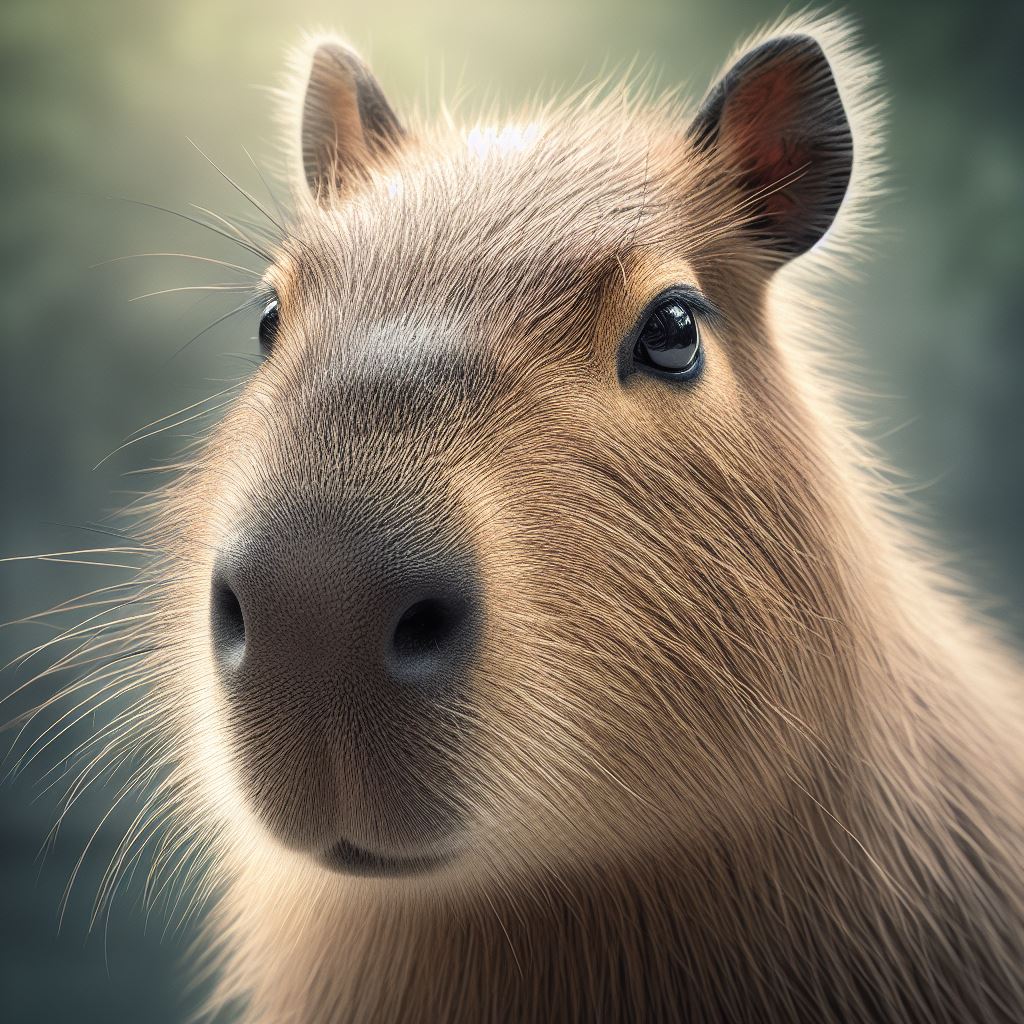Introduction
Cows are one of the most common domesticated animals, yet how much do we really know about these gentle giants? Get ready to be amazed, because here are 10 fun facts about cows you likely never knew! From their impressive intelligence to their quirky behaviors, cows have a lot more going on than meets the eye. After reading this, you’ll never look at cows the same way again.
Thesis: While often seen as docile barnyard animals, cows are surprisingly complex creatures with unique abilities and behaviors that never cease to amaze. This article will explore little-known cow facts around their history, biology, uses, care, intelligence and quirky behaviors.
History of Cows
Cows have been domesticated by humans for over 10,000 years, first originating in the Fertile Crescent region of the Middle East. Here are some fascinating historical cow facts:
- Cows were among the first animals to be domesticated, along with sheep, goats and pigs. This allowed early human civilizations to have a steady food supply.
- Cattle holds major cultural significance in many religions, including Hinduism, where cows are considered sacred.
- Until the 19th century, oxens were the main source of plowing and transportation for farmers. They were crucial to agriculture.
Throughout history, cows have shaped human civilization and enabled our survival and success. Their domestication marked a major turning point for the human species.

Cow Biology
From the outside, cows might seem like simple creatures. But their biology is quite complex and unique:
- Cows weigh anywhere from 1,000 to 1,500 pounds on average. The largest cattle breed, Chianina cows, can weigh over 2,600 pounds!
- A cow’s normal body temperature averages 101.5°F and they have an average lifespan of 15 to 20 years.
- Cows have the largest eyes of any land mammal. Their panoramic vision allows them to see 350 degrees around them without moving their heads!
- Cows have four stomach compartments to digest tough grasses. They regurgitate and re-chew their food as part of the digestion process.
Cows are incredible digestive machines, perfectly adapted to extract nutrients from fibrous plant materials. Their specialized biology helps turn grass into nutritious meat and milk.
Dairy Cows
When it comes to dairy cows, their milk production abilities are simply astonishing:
- The top dairy breeds include Holstein, Jersey and Brown Swiss cows. Holsteins are the world’s highest production dairy animals.
- Dairy cows are genetically bred to produce vast quantities of milk. The average Holstein can produce around 23,000 pounds of milk per year.
- To produce milk, calves are born and allowed to nurse briefly before humans take over milking. Most dairy cows have yearly calving cycles.
- Dairy cows are given additional feed like hay, silage and rations to support their incredibly high milk output.
Got milk? You have dairy cows to thank for it! From their selective breeding to their incredible milk production, dairy cows are amazing animals.
Beef Cattle
On the other hand, beef cattle breeds are focused on growing high-quality beef cuts:
- Top beef breeds include Angus, Hereford and Simmental cattle. Angus beef is known for its fine marbling and tenderness.
- Beef cattle are raised until they reach slaughter weight around 1,200 to 1,500 pounds, which produces the most desirable cuts of meat.
- Wagyu cattle are one of the most prized breeds. Their heavy marbling results in extremely tender, flavorful meat.
- Most beef cattle spend the majority of their lives grazing on pasture before moving to feedlots for finishing on grain-based diets.
From the succulent steaks to the juicy burgers we love, we have beef cattle farmers to thank for providing this nutritious and delicious meat source!
Oxen and Draft Cattle
While not as common today, cattle once served a crucial role as work animals on farms:
- Oxen are trained steers (castrated males) used for pulling plows, wagons and other heavy farm equipment.
- Draft cattle breeds like Chianina and Shorthorns are larger and stronger for use as oxens.
- Oxen were phased out by tractors in the 20th century but are still used on some small farms today.
- Using oxens for farming requires specialized training but allows for self-sufficient food production.
Cattle were the original tractors, helping our ancestors till fields and transport heavy loads. Though no longer as common, oxens are still an ingenious farming solution.
Cattle Handling and Care
To keep cows healthy and thriving, cattle farmers must understand their needs:
- Cows are ruminants that spend most of their time grazing on grasses, hay, and silage. Their diet must provide proper nutrition to maintain health and support growth.
- Shelter and space for movement are critical for cattle health and growth. Providing adequate facilities ensures their comfort and safety.
- As prey animals, cows have strong flight instincts and can be skittish if handled incorrectly. Low-stress handling is important to minimize stress and ensure their well-being.
- Signs of illness, such as lack of appetite, coughing, or lameness, require prompt veterinary care. Catching health issues early can prevent more severe problems and improve overall herd health.
Cattle Nutrition and Diet
Cattle are ruminants that require proper nutrition from their diet for health and productivity. Their main nutritional needs are protein, carbohydrates, fats, vitamins, minerals, and water.
- Cattle spend most of their time grazing on grasses, legumes, hay, and silage. Grass-fed cattle can often meet their nutritional needs from pasture alone, while grain-fed cattle are given more cereal grains and soybean meal.
- On average, a cow eats 2-2.5% of her body weight in dry matter per day, which is around 24-26 lbs for a 1200 lb cow.
- As ruminants, cattle ferment their feed in the rumen before full digestion. The rumen microbes break down fiber and provide cattle with energy from feeds.
- Key minerals cattle need include calcium, phosphorus, magnesium, sodium, potassium, sulfur, and chloride. Vitamins A, D, E and B complex are also essential.
- Nutritional requirements depend on factors like age, weight, growth stage, and production level.
Overall, providing cattle a balanced diet with proper nutrition is critical for good health and productivity. Monitoring quality pasture, hay, and supplementation is an important part of cattle management.
Low-Stress Cattle Handling Techniques
Using low-stress handling techniques improves safety and productivity by utilizing cattle’s natural behaviors and instincts:
- Cattle have strong flight zones and flocking instincts as prey animals. Avoid sudden movements or noises that may startle them.
- Work at the point of balance at the shoulder and move in and out of the flight zone to direct movement. Don’t overcrowd the flight zone.
- Use solid sides on chutes and pens to remove distractions and perceived threats.
- Move slowly and deliberately when working cattle to avoid triggering the flight response.
- Release pressure by stepping back when cattle move correctly to reward and reinforce calm behavior.
- Remain calm, quiet, and consistent in your actions to build trust and leadership with the herd.
- Plan facilities and layouts to make use of natural behaviors – cattle want to go back to where they came from.
Proper low-stress handling takes patience and practice, but greatly reduces fear reactions for safer, more efficient cattle working.
Cattle Shelter and Space Requirements
Cattle require adequate shelter and space for optimal health, growth and production:
- For cows in bedded pack barns, 35-50 sq ft per animal is recommended depending on weight.
- In cold climates, allow 50+ sq ft per cow if no outdoor access. Reduce to 30-35 sq ft if a dirt lot is accessible.
- Slatted flooring houses need 18-30 sq ft per cow depending on weight.
- Feeder space of 18-24 linear inches per head is recommended for cows.
- Outdoor space can range from 200-300 sq ft per cow for dry lots and 0.2-0.3 acres per cow for pasture.
- Adjust space needs up for larger cattle over 1500 lbs and down for younger stock under 800 lbs.
- Maximize space within recommendations to allow flexibility for future herd increases.
- Regularly reevaluate facilities to ensure adequate space is available as cattle age and grow.
Providing proper living space reduces disease risks and supports natural behaviors for healthier, more productive cattle.
Cattle Illness Signs and Veterinary Care
Watching cattle closely for signs of illness allows early detection and treatment:
- Common signs include loss of appetite, weight loss, coughing, nasal/eye discharge, diarrhea, lameness, depression.
- Isolate and examine any cattle showing signs of sickness promptly.
- Downed cattle require immediate veterinary evaluation and treatment.
- Sudden changes in behavior or appearance can also indicate illness.
- Weigh risks of disease exposure when introducing new animals – quarantine and observe new cattle.
- Work with your veterinarian to develop a herd health plan and treatment protocols.
- Keep records of medical issues and treatments to inform future health management.
- Ensure all family and staff know the procedures to identify and handle sick cattle.
Catching illness early and having an action plan allows timely treatment to protect herd health and animal welfare.
Cow Intelligence and Cognition
Cows possess advanced cognitive abilities and can solve complex problems. Studies show cows can:
- Learn new tasks quickly and remember them for a long time. Cows have excellent long-term memories.
- Understand cause-and-effect relationships and quickly learn to operate levers, buttons, and other mechanisms to receive rewards.
- Categorize objects and discriminate between individual cows and humans.
- Feel excitement when they solve problems, similar to humans.
- Adapt their behavior as circumstances change to achieve goals.
Quirky Cow Behaviors
Cows exhibit some amusing and quirky behaviors:
- Cows play games with each other, playfully chasing, mounting, and engaging in mock fights.
- Cows sometimes “surf” on top of others to assert dominance or get attention.
- Cows display boredom through behaviors like over-grooming, fence-pacing, or chewing wood. Providing enrichment reduces boredom.
- Cows nurture friendships by grooming each other, licking faces, and staying close to one another.
Cow Social Structures and Relationships
Cows live in complex social groups with hierarchy:
- Dominance in cows is based on weight, age, size of horns, aggressiveness, and seniority.
- Cows recognize each other and have preferred friends they spend more time grooming and grazing with.
- Cows hold grudges against cows that behave aggressively and will avoid them.
- When a new cow joins the herd, cows re-establish the social hierarchy through interactions. This causes short-term stress.
- Calmly handling cows reduces stress. Sudden movements, loud noises, and aggression frighten cows.
Conclusion
In summary, cows are intelligent, emotional animals that develop complex social relationships. Understanding cow psychology and providing proper enrichment enhances their welfare on farms. There is still more to learn about these fascinating animals.
FAQ
Q: How do cows communicate?
A: Cows communicate through vocalizations like mooing, grunting, bellowing, and bleating. They also communicate through body language such as tail flicking, head movements, foot stamping, and specific poses.
Q: Do cows have best friends?
A: Yes, cows form close friendships and spend more time grazing and grooming with special cow friends in their herd.
Q: Are cows affectionate animals?
A: Yes, cows are very affectionate animals, especially toward their young calves. They nurture friendships through mutual grooming and staying physically close.
Q: Why do cows stare at you?
A: Cows stare at humans out of curiosity. Since their vision is different than humans, they stare to see better. It can also be a sign of mild aggression if they feel threatened.
Q: Do cows have a good sense of smell?
A: Yes, cows have an excellent sense of smell and can smell something up to 6 miles away! They use smell to identify friends, detect predators, and evaluate food.





